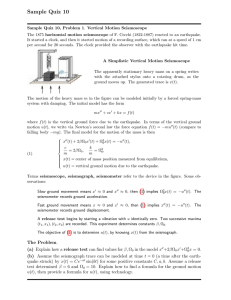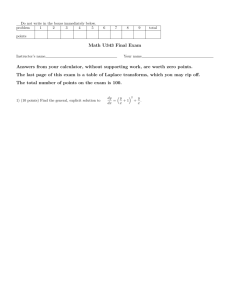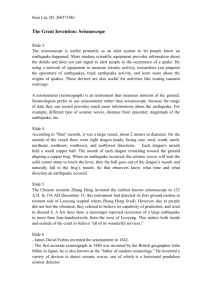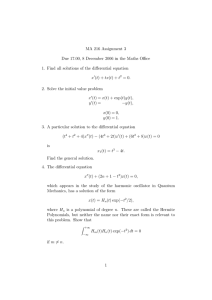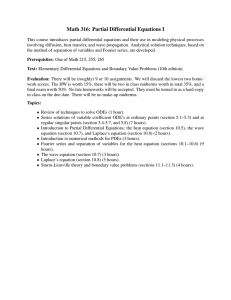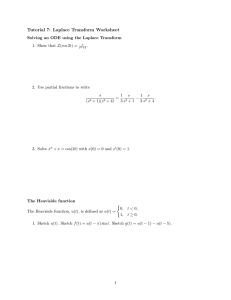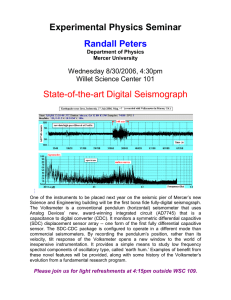Quiz 11
advertisement
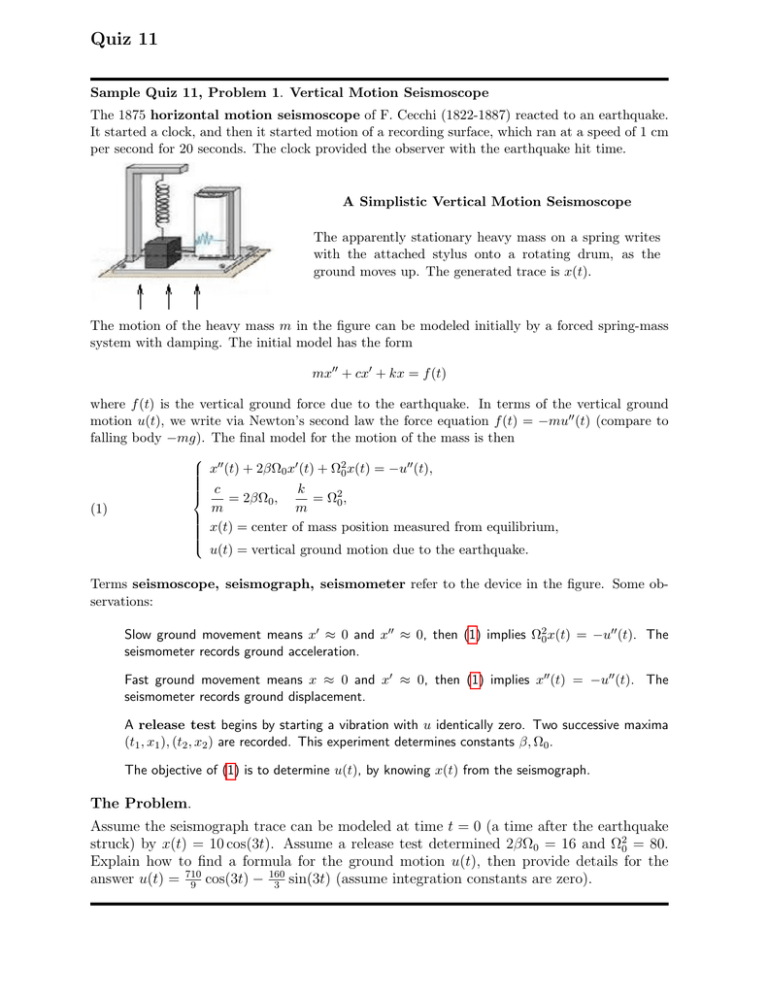
Quiz 11 Sample Quiz 11, Problem 1. Vertical Motion Seismoscope The 1875 horizontal motion seismoscope of F. Cecchi (1822-1887) reacted to an earthquake. It started a clock, and then it started motion of a recording surface, which ran at a speed of 1 cm per second for 20 seconds. The clock provided the observer with the earthquake hit time. A Simplistic Vertical Motion Seismoscope The apparently stationary heavy mass on a spring writes with the attached stylus onto a rotating drum, as the ground moves up. The generated trace is x(t). The motion of the heavy mass m in the figure can be modeled initially by a forced spring-mass system with damping. The initial model has the form mx00 + cx0 + kx = f (t) where f (t) is the vertical ground force due to the earthquake. In terms of the vertical ground motion u(t), we write via Newton’s second law the force equation f (t) = −mu00 (t) (compare to falling body −mg). The final model for the motion of the mass is then x00 (t) + 2βΩ0 x0 (t) + Ω20 x(t) = −u00 (t), k c = 2βΩ0 , = Ω20 , m (1) m x(t) = center of mass position measured from equilibrium, u(t) = vertical ground motion due to the earthquake. Terms seismoscope, seismograph, seismometer refer to the device in the figure. Some observations: Slow ground movement means x0 ≈ 0 and x00 ≈ 0, then (1) implies Ω20 x(t) = −u00 (t). The seismometer records ground acceleration. Fast ground movement means x ≈ 0 and x0 ≈ 0, then (1) implies x00 (t) = −u00 (t). The seismometer records ground displacement. A release test begins by starting a vibration with u identically zero. Two successive maxima (t1 , x1 ), (t2 , x2 ) are recorded. This experiment determines constants β, Ω0 . The objective of (1) is to determine u(t), by knowing x(t) from the seismograph. The Problem. Assume the seismograph trace can be modeled at time t = 0 (a time after the earthquake struck) by x(t) = 10 cos(3t). Assume a release test determined 2βΩ0 = 16 and Ω20 = 80. Explain how to find a formula for the ground motion u(t), then provide details for the answer u(t) = 710 cos(3t) − 160 sin(3t) (assume integration constants are zero). 9 3 Quiz 11, Problem 2. Laplace Theory Laplace theory implements the method of quadrature for higher order differential equations, linear systems of differential equations, and certain partial differential equations. Laplace’s method solves differential equations. The Problem. Solve by table methods or Laplace’s method. (a) Forward table. Find L(f (t)) for f (t) = 3(t + 1)2 e2t + 2et sin(3t). (b) Backward table. Find f (t) for L(f (t)) = 4s s−1 + . s2 + 4 s2 − 2s + 5 (c) Solve the initial value problem x00 (t) + 2x0 (t) + 5x(t) = et , x(0) = 0, x0 (0) = 1.
